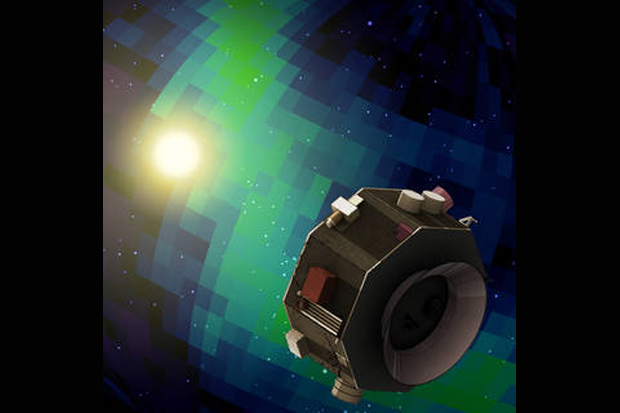NASA picks SpaceX to launch probe to study interstellar boundary
NASA has tapped SpaceX's Falcon 9 rocket to launch a new mission to study the protective bubble around our solar system.
SpaceX will launch the International Mapping and Acceleration Probe, or IMAP, for NASA in October 2024 under a $109.4 million agreement. The mission will launch from Space Launch Complex 40 pad at Florida's Cape Canaveral Air Force Station and also carry four smaller payloads, including the moon-bound Lunar Trailblazer probe, NASA officials said in a statement.
"IMAP will help researchers better understand the boundary of the heliosphere, a magnetic barrier surrounding our solar system," NASA officials wrote in the Sept. 25 statement. "This region is where the constant flow of particles from our sun, called the solar wind, collides with winds from other stars. This collision limits the amount of harmful cosmic radiation entering the heliosphere."
Related: Solar Quiz: How Well Do You Know Our Sun?
IMAP will be stationed at a stable point between the Earth and sun known as the Lagrange 1 point, where it will map the interstellar particles that punch through the heliosphere and study how they're accelerated through space, according to NASA's mission description. The $492 million mission was selected in 2018 as part of NASA's Solar Terrestrial Probes program.
The Lunar Trailblazer probe launching with IMAP is a small spacecraft designed to study water on the moon. A space weather-tracking probe, called the Space Weather Follow-On Lagrange 1 mission, will also launch with IMAP for the National Oceanic and Atmospheric Administration.
Two other payloads, both heliophysics missions for NASA, will join IMAP on the launch but have not yet been announced, the space agency said.
Breaking space news, the latest updates on rocket launches, skywatching events and more!
Email Tariq Malik at tmalik@space.com or follow him @tariqjmalik. Follow us @Spacedotcom, Facebook and Instagram.

Tariq is the award-winning Editor-in-Chief of Space.com and joined the team in 2001. He covers human spaceflight, as well as skywatching and entertainment. He became Space.com's Editor-in-Chief in 2019. Before joining Space.com, Tariq was a staff reporter for The Los Angeles Times covering education and city beats in La Habra, Fullerton and Huntington Beach. He's a recipient of the 2022 Harry Kolcum Award for excellence in space reporting and the 2025 Space Pioneer Award from the National Space Society. He is an Eagle Scout and Space Camp alum with journalism degrees from the USC and NYU. You can find Tariq at Space.com and as the co-host to the This Week In Space podcast on the TWiT network. To see his latest project, you can follow Tariq on Twitter @tariqjmalik.

